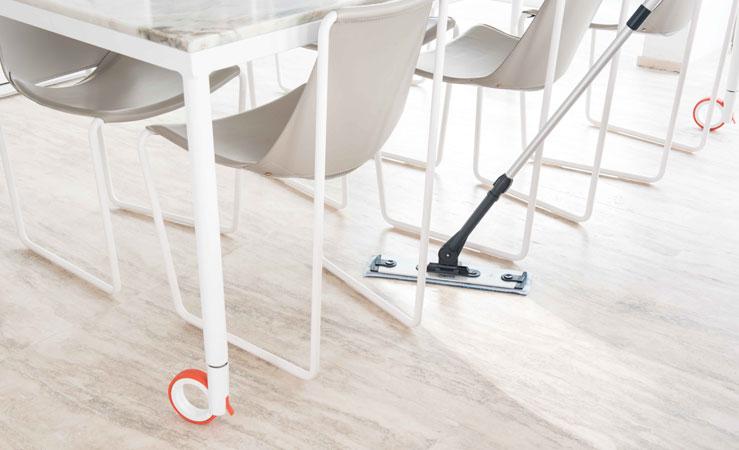With a steam cleaner you can finally say goodbye to a bucket and scrubbing brush, and also to germs and bacteria. In fact steam cleaning, guarantees deep hygiene and cleanliness, without the need for detergents or chemicals: thanks to the hygienic power of steam alone, up to 99.9% of germs and bacteria can be removed.
A steam cleaner is a practical and effective solution against all types of dirt on the washable surfaces of your home. Such as? Find out with this little guide to the best use of a steam cleaner.
How do steam cleaners work?
If when you hear about steam cleaning you think of huge and bulky tools and accessories, maybe you don't know the new generation of steam cleaners.
Born as a natural evolution of the steam mop or the traditional mop, this little gem of an appliance takes advantage of the natural sanitizing power of steam to thoroughly clean all washable surfaces in the home.
How does it work? Just fill the tank with tap water, attach a microfiber cloth to the mop: after about 10 seconds it's ready to be used.
The hot steam-soaked cloth removes and retains the most stubborn dirt (including fat and grease stains), eliminating germs and bacteria. The best steam cleaners currently on the market are cordless, with an ultra-light and articulated brush to easily reach even the most difficult places. All without the use of detergents and without the obstruction of the corded steam cleaner.
Tips for steam cleaning
For cleaning with a steam cleaner just follow a few small steps to benefit fully from all the advantages of this innovative system.
Some common mistakes to avoid when steam cleaning
With a steam mop you can clean and sanitize the whole house from top to bottom, using only the power of steam. One of the advantages of a cordless steam cleaner is precisely that it's suitable for all types of floors (stone, tile, marble, parquet) and also for many other washable surfaces in the house, even vertical ones: tiled walls, doors, doors of wardrobes, etc ...
However there are exceptions. One of the mistakes to avoid is to use steam on non-washable surfaces, or on untreated wax or wood that could be damaged by heat.







